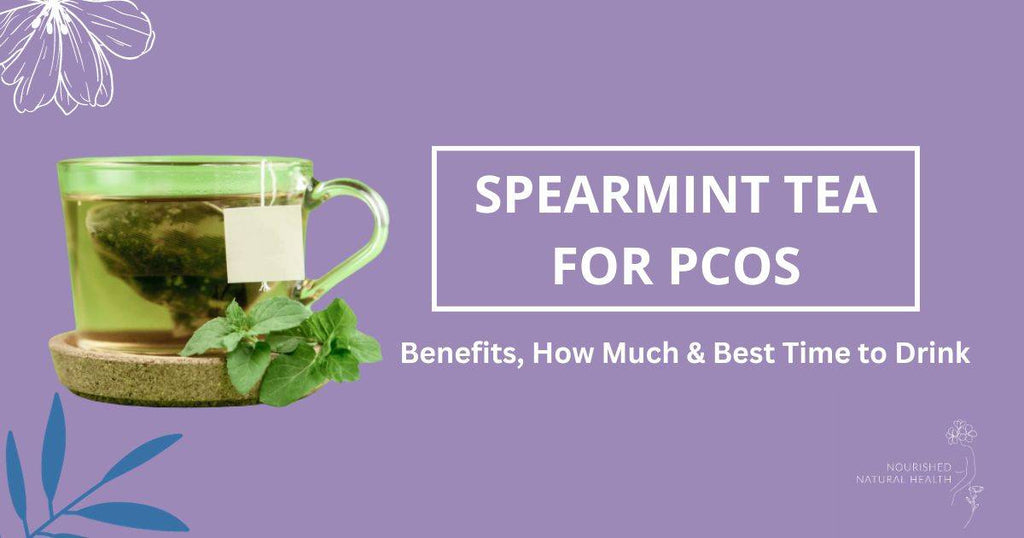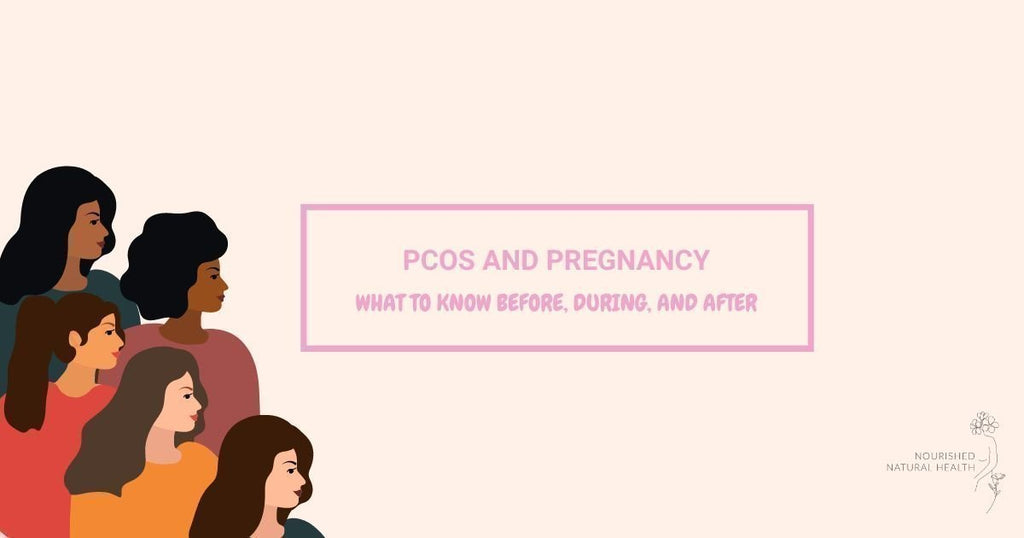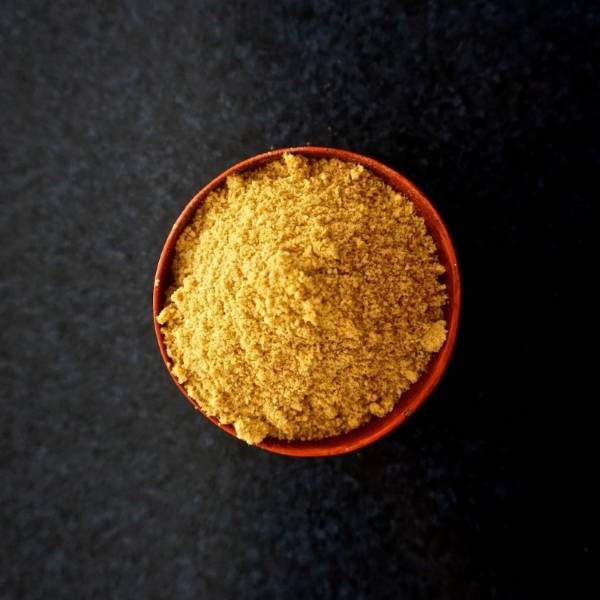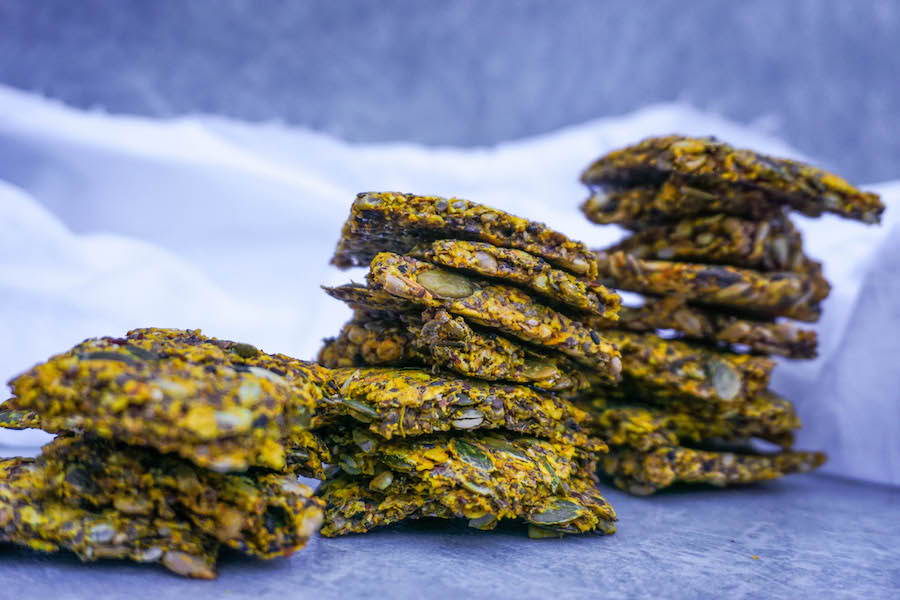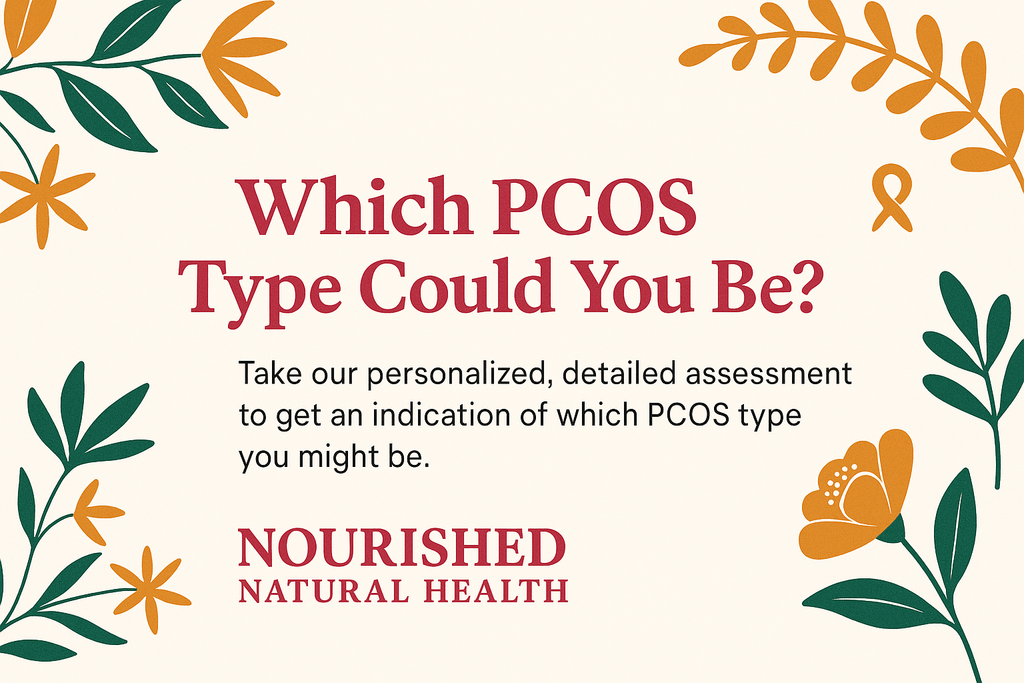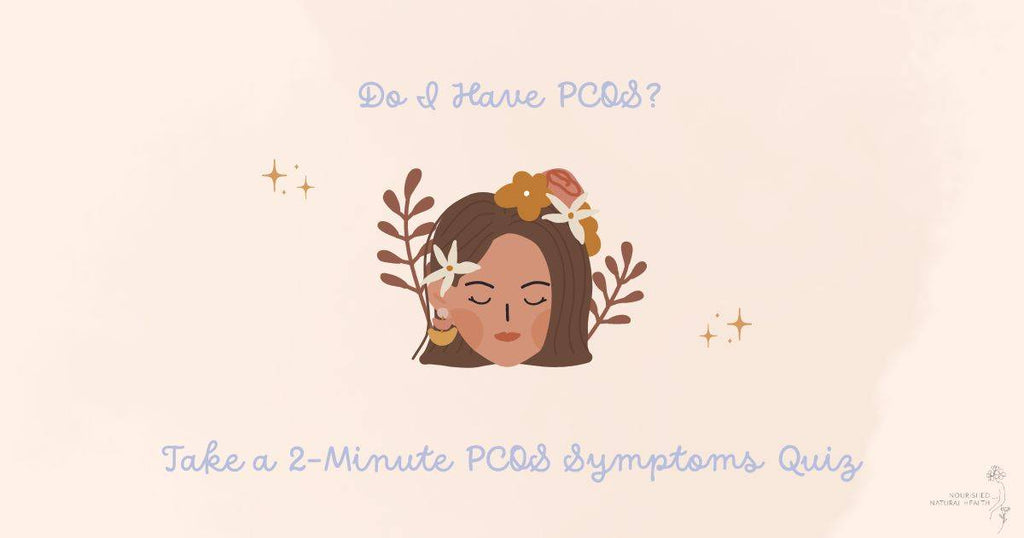There are many underlying causes of spotting, and each requires a different approach. Most causes are harmless and will resolve on their own, however spotting may be a sign of something more serious going on so it's always worth exploring the top causes.
Why Am I Spotting Before or After My Period?
Confused or concerned about spotting? Read our full guide here.

In This Article
Why Am I Spotting Before or After My Period?
Spotting between periods (or ‘abnormal uterine bleeding’ as your gynaecologist likes to call it) can be frustrating and scary.
Your period finished days or weeks ago and isn’t due yet, but you’re seeing small amounts of blood on your underwear - what’s going on?
There are several underlying causes of spotting, and each requires a different approach. The first question to ask yourself is “when am I noticing spotting?”.
The most common time to notice spotting is in the days before your next period starts, and around ovulation (mid-cycle).
Sometimes the spotting is happening totally at random, and this is a clue of a different underling cause that may not be hormonal.
Let’s Break It Down…
I’m spotting in the middle of my cycle (Ovulation Spotting)
Spotting around the time you ovulate can be very normal and not a sign of concern. Right before you ovulate, your body releases a surge of estrogen.
This is part of the hormonal cascade which triggers an egg to be released from your ovary (ovulation).
After this takes place, there is a small dip in estrogen. In some women, this sudden decrease in estrogen can trigger a light hormonal withdrawal bleed.
This type of ovulation spotting should not last longer than a day or two, and usually appears as blood-tinged mucus that is bright red or pink in color.
In many women this will occur in every cycle, and is simply a sign of healthy ovulation taking place.
After ovulation has taken place, the follicle which housed your egg that was released turns into a small gland called the corpus luteum.
This tiny gland secretes our other period-friendly hormone: progesterone. One of the key functions of progesterone is to hold on to the uterine lining built up in the first part of our cycle until our next period is due.
The reason this mid-cycle spotting should last only a day or two is because progesterone begins to kick in and holds the uterine lining in place, stopping the spotting.
If your spotting is lasting longer than a day or two around ovulation, it is worth visiting your doctor to rule out other underlying causes, as well as reading the Low Progesterone section below.
I’m spotting in the week before my period (Premenstrual Spotting) OR I’m spotting when I get stressed
This is the most common type of spotting and can also be very normal. If you are noticing some light spotting one day before your period begins, this may not be cause for concern.
However, spotting for longer than a day before your period begins (when bleeding is heavy enough to require more than just a liner), you may be experiencing low progesterone levels, or progesterone deficiency.
The key role of progesterone is to hold tightly onto the lining of your uterus to prepare for a possible embryo implantation. In a healthy cycle where you don’t fall pregnant, after around 10-15 days your progesterone levels plummet, triggering the lining of your uterus to shed in the form of your period.
When progesterone levels are too low, small parts of the lining of your uterus can start to break away before your period officially begins. This is seen in the form of light spotting before your period, and usually occurs within 7-10 days of your period.
The number one contributor to low progesterone levels is S.T.R.E.S.S.
To find out more about the connection between period problems, stress and low progesterone, check out my blog here.
Stress impacts our cycles in many ways, but one common scenario is for stress to delay or halt ovulation.
This happens because your body decides that now is not a great time for you to fall pregnant due to your relentless stress, so shuts down ovulation.
Because your uterine lining has already begun to develop by this point, it can become too thick causing small parts of the lining to be shed in the form of spotting.
If you are experiencing late periods or irregular cycles, it’s important to examine the impact of stress, both psychological but also physical (e.g under-eating or over-exercising) on your hormones.
Take a read of the blog above for a deep dive into how to manage your stress response to improve your period health.
Under-active thyroid function is another common cause of premenstrual spotting.
If you suffer from other low functioning thyroid symptoms like hair loss, dry skin, fatigue or weight gain, visit your doctor to request a full thyroid panel to assess your thyroid function as a possible cause of your spotting.
My spotting or bleeding stars a few days after my period finishes (Stop and Start Period)
Sometimes your period seems like it has completely finished.
You throw your pads and tampons in the back of the cupboard and celebrate, only to find blood on your underwear a day or more later.
What’s going on?
Periods that stop and start are actually really common and often not a sign of a serious underlying issue.
I wrote a full blog post on stop and start periods where I covered the 6 key causes and what to do about it. Read the blog here.
I’m on birth control and noticing spotting (Breakthrough Bleeding)
If you are currently taking the birth control pill and noticing spotting, this likely has nothing to do with your hormones.
This is because hormonal birth control works by suppressing your natural hormone levels in order to prevent pregnancy.
More likely what is going on is something called ‘breakthrough bleeding.
This is often related to incorrect dosing of the synthetic hormones in your birth control pill.
If this is happening to you, visit your doctor to reevaluate the dosage or type of birth control you are using.
Spotting is also common when using forms of birth control like “the shot” (Depo Provera) as well as implants (like Nexplanon and Implanon).
Hormonal Intrauterine Devices (IUD) like Mirena commonly cause spotting, particularly in the first few months after having them inserted.
Similarly, non-hormonal IUDs such as Paragard (a copper IUD) commonly cause irregular bleeding patterns, sometimes for up to 39 weeks after insertion.
If you are currently using birth control and are concerned about breakthrough bleeding, visit your doctor for evaluation.
I’m possibly pregnant (Early Pregnancy Spotting)
Light spotting during early pregnancy is very common, and estimated to occur in around 20% of pregnancies.
It is usually nothing to worry about and simply a sign of your changing hormonal landscape.
If you think you may be pregnant, it’s best to take a home pregnancy test and visit your doctor to confirm.
If the bleeding becomes heavier or is accompanied by cramping, call your doctor for immediate advice as this may be a sign of early pregnancy loss or miscarriage.
I’m spotting after having sex or having a pap smear
Spotting after having sex is common, and often not related to hormonal imbalances but issues with the cervix.
Firstly, it’s possible to experience light spotting after sex if it was particularly rough or there was a lack of lubrication causing extra friction.
If this is the case, consider using a water-based lubricant.
Another cause of spotting after sex is infection.
This may be in the form of bacterial vaginosis or a sexually transmitted infection.
Bacterial vaginosis causes inflammation of the cervix.
This means that when the cervix is bumped (such as during sex or a pap smear) it can cause spotting or light bleeding.
Bacterial vaginosis is often accompanied by abnormal vaginal discharge, itching or offensive odour (often a fishy smell).
If you feel this may be occurring, visit your doctor to confirm.
Sexually transmitted infections can similarly cause spotting and need to be confirmed by visiting your doctor.
If you do test positive for a sexually transmitted infection, your partner needs to be tested and treated as well.
I’m spotting at random points of my cycle (but not after sex) - (Other Causes of Spotting)
Spotting at random points of your cycle can occur due to other underlying causes including endometriosis, adenomyosis uterine fibroids and Polycystic Ovary Syndrome (PCOS).
Endometriosis, adenomyosis and uterine fibroids can occur due to hormonal changes, particularly changes in estrogen.
As estrogen is responsible for building up a thick, healthy lining in our uterus, conditions which affect estrogen levels can cause spotting between your period.
PCOS commonly features anovulation (lack of ovulation), or very long cycles involving multiple attempts at ovulation.
Failing to ovulate regularly can trigger spotting as the lining of the uterus continues to build up, and eventually is shed in the form of a period or spotting.
Spotting Due To Progesterone Deficiency
The most common cause of low progesterone is stress.
This can be in the form of psychological or emotional stress (like deadlines at work or arguments with your family), but also physical stress (like not eating enough calories or over exercising).
Read my full blog on the impact of stress on your cycle and my top tips to manage stress here.
Beyond managing your stress response, supporting your body to create healthy levels of progesterone is key.
Focus on magnesium-rich foods like dark leafy greens, cacao, coconut water and pumpkin seeds.
These hormone nourishing foods help to support regular ovulation by regulating your stress response.
As well as enjoying magnesium-rich foods, consider supplementing magnesium glycinate at around 200 - 400mg per day.
Always check with your doctor before beginning any new supplement or vitamin to make sure it is appropriate for you.
Vitamin C-rich foods are another great food-as-medicine tool to support healthy progesterone levels.
Vitamin C is one of the few nutrients that has been shown to support progesterone deficiency in some women.
Finally, make sure you are ovulating.
The only way women make progesterone is by ovulating regularly.
Track your cycle using an app and consider taking your basal body temperature using an oral thermometer daily to confirm ovulation is taking place.
A temperature shift of around 0.3°C for more than 3 days is a good sign that ovulation has taken place.
For further confirmation that ovulation is taking place, ask your doctor for a blood test to measure serum progesterone roughly 7 days before your period is due.
You should see high progesterone levels at this point of your cycle if you have ovulated that month.
If you aren’t seeing a sustained temperature shift before your period or your blood results reveal low progesterone, it’s time to work out why you aren’t ovulating.
Consider the impact of stress on your cycle or other hormonal imbalances that may be contributing to your spotting.
Wondering if hormonal imbalance might be the reason you are experiencing spotting?
Take my Free Hormone Imbalance Quiz now to find out which pesky hormone is most likely the culprit for your symptoms.
Spotting Due To Hormonal Birth Control
Visit your doctor for advice on the dosage and type of hormonal birth control you are using. In many cases, your doctor will be able to advise changes to stop the spotting or irregular bleeding.
If you are ready to stop relying on hormonal birth control but are nervous to transition off it, I go through all the details in my Amazon best seller PCOS book, PCOS Repair Protocol.
Spotting Due To Bacterial infections or an STD
If you think you may have an infection that is causing your spotting, visit your doctor as soon as possible for further testing to confirm what is going on.
Your doctor will also be able to provide you with treatment options to manage the infection.
If an infection is confirmed, your partner should also be tested and treated to prevent reinfection.
If you discover you are suffering from bacterial vaginosis, yeast infections or other non-sexually transmitted diseases, consider addressing your gut health.
An imbalanced gut microflora (the ratio of good and bad bugs in your gut) has a direct impact on bacterial imbalances in your vagina.
Consider a high strength probiotic to improve microflora balance.
Speak to your doctor or natural health care practitioner for advice on specific strains that can positively influence the vaginal microbiome.
When it comes to improving progesterone levels and addressing other underlying causes of spotting, remember that it takes on average 100 days for your ovarian follicles to develop from immature eggs all the way to being released at ovulation.
This means it takes 100 days of being fully nourished, eating enough calories and managing stress, for the true impacts on your cycle to be seen.
The period symptoms you are having now are likely the result of changes you experienced several months ago.
Don’t expect changes over night, or even by your next cycle.
Be patient and remember you are in this for the long haul! You’ve got this.
Now it’s your turn!
Have you experienced spotting between your periods before?
Do you relate to any of the above scenarios?
Have you ever had periods that stop and start?
I’d love to hear your story and what you have found works for you - share with me in the comments below ↓
TLDR (Too Long Didn’t Read) - Common Spotting Between Periods FAQs:
Why Am I Spotting Between Periods?
What Is Spotting A Sign Of?
Spotting occurs when small parts of the lining of your utuerus break away before your true period beings. It can be a sign of hormonal fluctuations, pregnancy implantation, injury (e.g. pap smear or intercourse) or an underlying condition.
Is It Normal To Spot Mid Cycle?
Spotting around the middle of your cycle may be caused by ovualtion which is common for some women. In most cases, it is harmless and simple reflects the sharp drop in estrogen experienced right after ovualtion. Ovulation spotting should be light and last no longer than a day or a few hours. Longer or heavier spotting warents investigation by your doctor.
When Should I Go To The Doctor For Spotting Between Periods?
If you are experiencing heavy bleeding between your periods that requires more than a panty liner, or are experiencing bleeding after sexual intercourse, it's time to visit your doctor for a check up to rule out other causes.
Why Am I Spotting Before My Period?
Spotting before your period begins is often a sign of lower progesterone levels as progesterone is responsible for maintainig the uterine lining you have built up in the first half of your cycle, until menstruation is due.
Could I Be Pregnant Spotting Before My Period?
A small number of women experience "implantation bleeding" around the time their period would normally be due, when they are actually pregnant. This occurs due to the fertilized egg attaching to the uterus and lightly distrupting the lining.
Keen to dig your teeth into even more hormone-loving content?
About The Author - Tamika Woods


